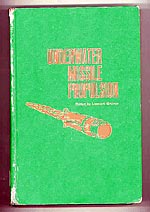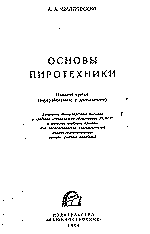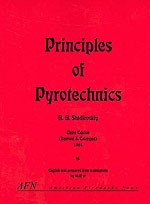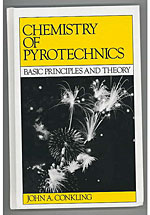Technical References
Introduction:
Principles of cavitation and supercavitation have been observed and studied for several generations. A supercavitating underwater vehicle has been studied and partially developed in several countries, especially since the late 1950's. I have learned a great deal about supercavitation since my release from prison in Russia. This field of study is part of a larger aero/hydrodynamics area of interest I refer to as "air lubrication", which impacts any moving vehicle that incurs drag from either air, water or other gas/liquid surroundings. The study of various air lubrication phenomena continues to provide new breakthroughs in speed and economy.
As noted in my book, since my release I have discovered open source background references here in the US that contain all formula, designs, and other technical materials contained in the Russian reports and information provided to us since we started working with several Russian institutes in 1996. The Russians with whom I had been working had identified numerous open source materials within their and our own literature, however, my dear friend Comrade Judge Nina would not allow any of this material to be recognized or entered into evidence in her court.
A concerted effort to develop an underwater supercavitating vehicle was begun here in the US and the Russians obtained key documents from us and reportedly bought at least one patent from a company in the US. From what I have been able to learn, the program here in the US was not pursued after the mid-1960's as an alternative weapons system was selected over the supercavitating approach. Only in the past few years, has the potential for supercavitation in surface ships and other civil applications been recognized.
While I have found literally dozens of reference materials, some of the most relevant include the following specific documents:
- US Patent 2,971,325; patent awarded Feburary 14, 1961 to Calvin A. Gongwer, assigned to Aerojet-General Corporation; with drawings and references.
- US Patent 3,079,753; patent awarded March 5, 1963 to Calvin A. Gongwer, assigned to Aerojet-General Corporation; with drawings and references.
In addition to the two basic patents noted above, I have identified at least fifteen related patents; some dating back to the 1890's and some coming from other countries such as United Kingdom, Germany and Italy.
 Greiner, Leonard; Underwater Missile Propulsion, Compass Publications, Inc., Copyright 1967. This collection of papers was presented at a symposium earlier in the 1960's and finally assembled in this now out-of-print book. A good deal of the book summarizes work done at Penn State University's Applied Research Laboratory. Several Russians I was working with had copies of this book and referred to it as the "bible" of their development. This book, in addition to its contents of over 500-pages, contains numerous references to other open technical documents, many of which my Russian friends also had obtained.
Greiner, Leonard; Underwater Missile Propulsion, Compass Publications, Inc., Copyright 1967. This collection of papers was presented at a symposium earlier in the 1960's and finally assembled in this now out-of-print book. A good deal of the book summarizes work done at Penn State University's Applied Research Laboratory. Several Russians I was working with had copies of this book and referred to it as the "bible" of their development. This book, in addition to its contents of over 500-pages, contains numerous references to other open technical documents, many of which my Russian friends also had obtained.
 Shidlovskiy, A. A.; Principles of Pyrotechnics, published in the Russian language in 1964. This 340-page book describes chemistry of various solid metal fuels, how to produce them, how to use them in various applications from fireworks to underwater rocket propulsion, and other technical details. I was given a copy of this publication in 1998 by a Russian scientist. When I returned to Penn State/ARL with it, they were very interested in it and began a translation.
Shidlovskiy, A. A.; Principles of Pyrotechnics, published in the Russian language in 1964. This 340-page book describes chemistry of various solid metal fuels, how to produce them, how to use them in various applications from fireworks to underwater rocket propulsion, and other technical details. I was given a copy of this publication in 1998 by a Russian scientist. When I returned to Penn State/ARL with it, they were very interested in it and began a translation.
 Shidlovskiy, A.A.; Principles of Pyrotechnics, Third Edition (1997) Revised and Enlarged; American Fireworks News; originally translated into English in 1964 by the United States Air Force. I purchased this well bound and illustrated document for $48.50.
Shidlovskiy, A.A.; Principles of Pyrotechnics, Third Edition (1997) Revised and Enlarged; American Fireworks News; originally translated into English in 1964 by the United States Air Force. I purchased this well bound and illustrated document for $48.50.
 May, Albert; Water Entry and the Cavity-Running Behavior of Missiles, 1975, 486-pages illustrated, US Naval Sea Systems Command Hydroballistics Advisory Committee. This is the manual that I was requested to obtain for Professor Genrik Uvarov. His copy supposedly had been used so much that it was in tatters.
May, Albert; Water Entry and the Cavity-Running Behavior of Missiles, 1975, 486-pages illustrated, US Naval Sea Systems Command Hydroballistics Advisory Committee. This is the manual that I was requested to obtain for Professor Genrik Uvarov. His copy supposedly had been used so much that it was in tatters.
 Conkling, John A.; Chemistry of Pyrotechnics: Basic Principles and Theory, 1985, 183-pages, Marcel Dekker, Inc. This is only one book of Professor Conkling's which the Russians had obtained and used as a "bible" in updating fuels. This book and its bibliography contain virtually everything plus much more than we were ever provided by the Bauman reports.
Conkling, John A.; Chemistry of Pyrotechnics: Basic Principles and Theory, 1985, 183-pages, Marcel Dekker, Inc. This is only one book of Professor Conkling's which the Russians had obtained and used as a "bible" in updating fuels. This book and its bibliography contain virtually everything plus much more than we were ever provided by the Bauman reports.
For a recent excellent review of supercavitation:
 Steven Ashley; Scientific American, May 2001 pg 70, article "Warp Drive Underwater".
Steven Ashley; Scientific American, May 2001 pg 70, article "Warp Drive Underwater".












